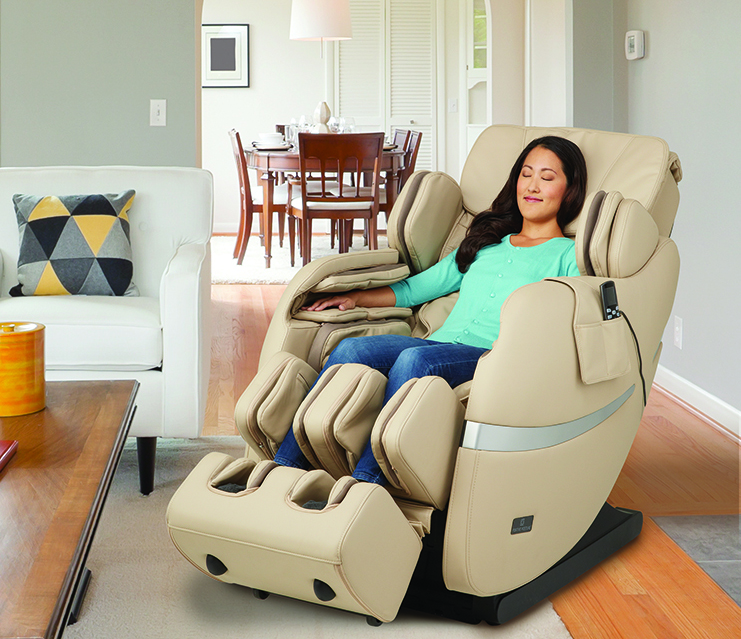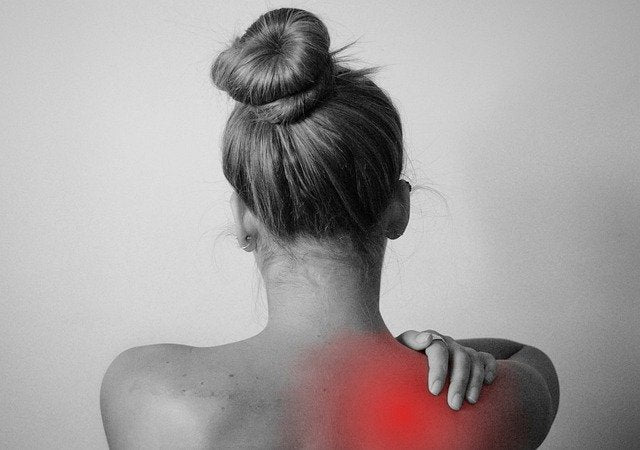A lot of people are wondering if massage chairs can actually hurt you. The answer is a little complicated. It really depends on the person and the chair.
Some people have no problem with massage chairs, while others find them to be quite uncomfortable. It really varies from person to person. If you have any concerns about whether or not a massage chair is right for you, it’s always best to consult with your doctor first.
If you’re thinking about getting a massage chair, you may be wondering if they’re safe. After all, you’ll be spending a lot of time with your head and neck in the chair, so it’s important to make sure that you won’t be putting yourself at risk.
Fortunately, most massage chairs are designed with safety in mind.
However, there are still some potential risks that you should be aware of before using one.
One of the most common concerns is that massage chairs can cause neck pain. This is because the chairs often put pressure on the back of the neck, which can compress the nerves and muscles in the area.
If you already have neck pain, this may make it worse.
Another concern is that massage chairs can cause blood clots. This is because when you’re sitting in a massage chair for an extended period of time, your blood flow slows down.
This can lead to clotting, which could potentially be dangerous if not treated quickly.
Overall, massage chairs are generally safe to use. However, it’s important to be aware of the potential risks before using one so that you can stay safe and healthy while enjoying its benefits!
Low Back Pain and Massage Chairs
Can a Massage Chair Cause Injury?
A massage chair is a device that people use to massage their back, neck, and other parts of their body. While most massage chairs are safe, there is a small risk of injury when using one.
The most common injuries from using a massage chair are bruises and strains.
These usually happen when the person using the chair does not follow the instructions properly or tries to use the chair for something it was not designed for. For example, if someone tries to stand on a massage chair, they could easily bruise their legs or strain their back.
Another potential injury from using a massage chair is getting pinched by the rollers.
This can happen if the person does not position themselves correctly in the chair or if they move around too much while the rollers are working. If this happens, it can be painful and may leave marks on the skin.
To avoid these risks, it is important to read the instructions that come with your massage chair and to only use it as directed.
If you have any concerns about whether or not a massage chair is safe for you to use, talk to your doctor before using one.
Are Massage Chairs Supposed to Hurt?
No, massage chairs are not supposed to hurt. In fact, they are designed to provide a relaxing and comfortable experience. However, it is possible that you may feel some discomfort if the chair is not adjusted properly or if you have a sensitive area on your body.
If you do feel pain, it is important to stop the massage and consult with the manufacturer or a qualified medical professional to ensure that there is no underlying health condition causing the pain.
What Happens If You Use a Massage Chair Too Much?
If you use a massage chair too much, you may experience some negative side effects. These can include: muscle fatigue, joint pain, and numbness. You may also find it difficult to get out of the chair after extended use.
If you do experience any of these issues, it is best to consult with a doctor or physical therapist to see if using a massage chair is right for you.
What are the Disadvantages of a Massage Chair?
When it comes to massage chairs, there are both advantages and disadvantages that come along with using one. While massage chairs can provide a number of benefits, there are also some potential downsides that you should be aware of before making a purchase. Here is a look at the pros and cons of massage chairs:
Pros:
-Can help to relieve pain and tension in the body
-Can improve circulation
-Can promote relaxation
-Can be used in the comfort of your own home
Cons:
-Can be expensive to purchase outright or rent on a regular basis
-May not be as effective as an in-person massage
-Some people may find them uncomfortable to use
Overall, whether or not a massage chair is right for you will depend on your individual needs and preferences. If you are looking for an easy way to relax and reduce stress, then a massage chair could be a good investment. However, if you are dealing with serious pain or other health issues, then it might be best to consult with your doctor first to see if this type of treatment is right for you.

Credit: www.positiveposture.com
Lower Back Pain from Massage Chair
If you suffer from lower back pain, you may be looking for relief in all the wrong places. You may have tried medication, physical therapy, and even surgery, but still find yourself in pain. If this is the case, you may want to consider massage therapy.
There are many benefits to massage therapy, including improved circulation, reduced stress, and relief from muscle tension. Massage therapy can also help to improve range of motion and flexibility. When it comes to lower back pain specifically, massage therapy can help to release trigger points and loosen muscles that are tight and causing pain.
One of the best ways to receive massage therapy is through a massage chair. Massage chairs offer a number of benefits over traditional massage therapists. For one, they are much more convenient since you can use them in your own home whenever you like.
They are also typically more affordable than visiting a masseuse regularly. Additionally, most modern massage chairs come with a variety of features that allow you to customize your experience so that you get exactly the type of massage that you need.
If you suffer from lower back pain and haven’t found relief through other methods, consider trying massage therapy with a massaging chair.
You may be surprised at just how effective it can be!
Can Massage Chairs Hurt Your Back
If you’ve ever had a massage, you know how good it can feel. But what if your massage was from a machine? Massage chairs are becoming increasingly popular, but some people worry that they could hurt your back.
There is no evidence that massage chairs are harmful to your back. In fact, there is some evidence that they can be helpful for people with back pain. A study in the Journal of Alternative and Complementary Medicine found that participants who used a massage chair for 10 minutes per day for four weeks had less back pain and disability than those who didn’t use a chair at all.
So if you’re considering a massage chair, don’t let worries about your back stop you from enjoying the benefits of this relaxing treatment.
Bruises from Massage Chair
When you receive a massage, the therapist will likely use some form of pressure on your body. This can cause bruises in some people, especially if they are receiving a deep tissue massage. While bruises are generally not harmful, it is important to be aware that they can occur.
There are a few things that you can do to help prevent bruising from happening during your massage. First, make sure to communicate with your therapist about any areas that are particularly sensitive. Second, avoid wearing loose clothing that could shift during the massage and expose an area that is more susceptible to bruising.
Finally, try to relax as much as possible during the massage so that your muscles are less likely to tense up and resist the therapist’s pressure.
If you do end up with a bruise after your massage, don’t worry! Applying a cold compress to the area for a few minutes can help reduce swelling and pain.
You can also try using Arnica cream or gel, which is a natural remedy that helps promote healing. If you have any concerns about your bruise, be sure to contact your healthcare provider for advice.
Conclusion
There are a lot of different types of massage chairs on the market, and it’s important to choose one that is right for you. If you have any health concerns, be sure to consult your doctor before using a massage chair. Massage chairs can provide a great way to relax, but they can also cause some problems if they’re not used correctly.
It’s possible to hurt yourself if you use a massage chair incorrectly, so it’s important to be careful. Make sure to read the instructions carefully and follow them closely. If you have any questions, ask a salesperson or your doctor before using the chair.
